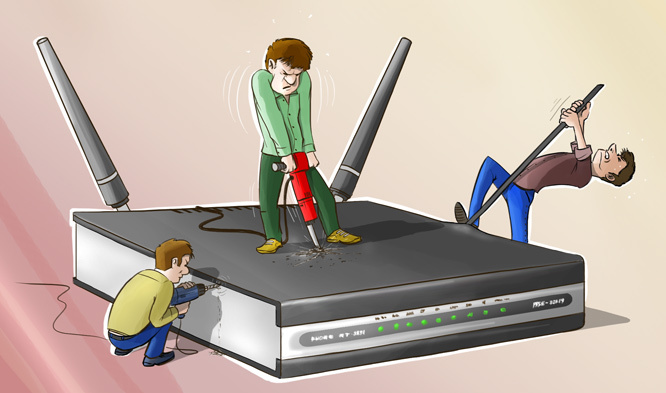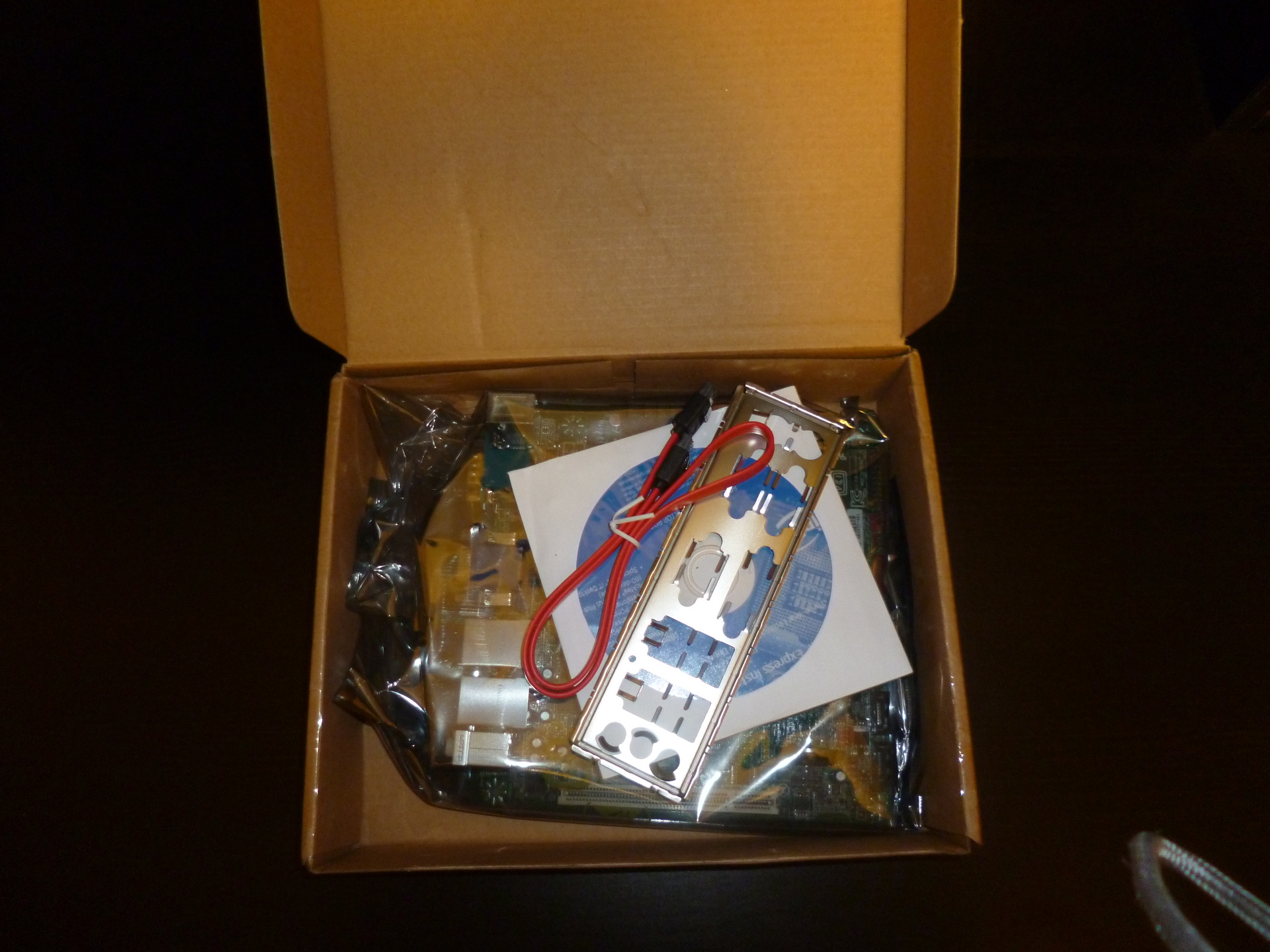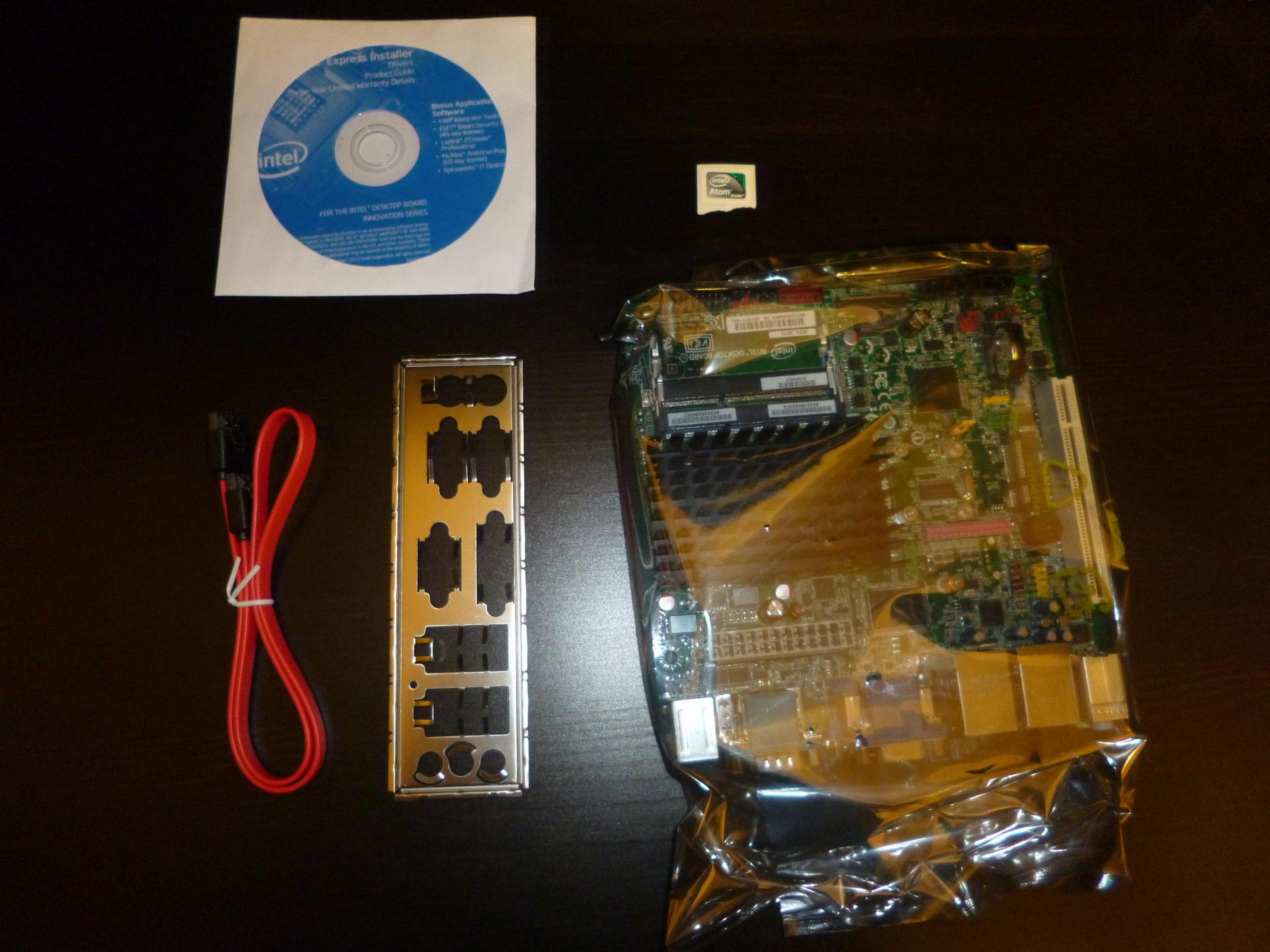Experience creating a home Wi-Fi router. general review

Greetings dear Habrasoobschestvo! I’ll make a reservation right away: historically, both of my upper educations are connected with IT a little less than nothing, so fussing with the glands is one of my favorite hobbies. Something like this.
I understand that I am far from the first to describe this topic, at Habré we already shared experience in building such solutions, but I suppose there are people who, like me, are far from the network
Prehistory
1. Lyric
I will come from afar. Back in 2011, I happened to move into a house called “low-rise construction” in the official language. For this very reason, the Internet could only be obtained from a very federal provider of ADSL technology. I will not describe all the “charms” of using this access and communicating with technical support, I can only say that it looked like materialized ad, for the speed did not reach 6 Mbit / s and the connection breaks happened more often than it can be adequately perceived. With 3G, somehow I didn’t work out in life, attempts to connect to “wired” providers ended up promisinginter regional provider, who left home networks in due time. As a result, we have quite a 100 megabit access with blackjack preference and cable television with courtesans of fallen women.
... we will contact you as soon as possible to connect ...- my sorrow was insatiable. But there was a man who shook our sleepy two-story swamp and offered to send a couple of applications to a couple of suitable providers. And (lo and behold!) Grace has descended upon us in the form of a wonderful
2. IT
Having hidden an old ADSL router from sin, I blissfully stuck the hose from the driver into my old but reliable Asus WL500-gP first generation. The zoo of home devices consists of 2 laptops, 3 smartphones and other hardware, which I carry / bring with me visiting friends / etc (underline the necessary). In short, the device coped with such a load. At one point, fell off and stopped connecting USB-case with a hard drive, which swung torrents. Then I noticed that Wi-Fi hangs and hangs when switching the UPS to battery operation. By simple manipulations with a multimeter, it was found that the UPS in backup power mode produces from 165 to 170 volts of voltage, and the router at this moment falls into a stupor, lighting 4 LAN indicators, WAN indicator and extinguishing all others. The problem is familiar: such an indication indicates a power failure, for this reason, the power supply of the router has already been replaced once, because the mother ordered me to live long in 2011. And then I wondered if it was not worth changing the router at all. Searches on the Internet of the model that meets my unbridled imagination, disheartened me. The price tag for distinct models of routers positioned as SOHO starts from 6-8 kilorubles (as of the end of October of the current year). And then I thought: wouldn’t I have to assemble the router myself? Active surfing in search of a solution led me to 2 options: hardware from MikroTik (very, very good, usable devices) or a fully self-assembled router_domain_minserver . It was decided to postpone the routers from MikroTik to “sometime later,” because I wanted hardcore, and the experience with the proprietary MikroTik RouterOS that I had in the past left not very pleasant impressions. Well, that was a saying, and now, actually, the fairy tale itself ...
Search
The main task was to build a wireless home router with the ability to perform the functions of a small, again, home server and further improvement thereof. Important aspects when choosing were low noise and energy efficiency. Having made a strategic decision to assemble a device based on mini-ITX solutions, I set about selecting components. It turned out that finding the right hardware in the right budget was not so easy. Long surf evenings were rewarded, and I settled on the following components:
')
- The Morex T-3460 chassis bribed me with an external power supply (60 watt and 80 watt came in 2 versions; I got 60W), the ability to install full-size expansion cards, and parallel to the motherboard using the included Riser adapter. He was ordered to the local office but with delivery from Peter transport company, before getting into the hands of 15 days
- motherboard intel d2500cc It was chosen by me because of the onboard dual-core 64-bit Intel Atom D2500 processor, passive cooling, two Intel Gigabit network interfaces and a mini-PCI-E slot for connecting a Wi-Fi card. Ordered in the online store with delivery from Moscow, after payment came in 14 days
All other pieces of iron, without further ado, were purchased in one of the nearest Internet discounters:
- operating memory SO-DIMM DDR-3 1066 4Gb Corsair (CMSA4GX3M1A1066C7)
- SSD Crucial M500 120 GB (CT120M500SSD1)
- 1000 Mbit D-Link DGE-528T network card. Included is a low-profile bracketComes without box, despite the information from the official site
- mini-PCI-E Wi-Fi Intel 7260.HMWWB 802.11 a / b / g / n / ac card + Bluetooth 4.0
- 2 antennas D-Link ANT24-0502
I had to suffer with the search for pigtails to connect antennas to Wi-Fi, which initially led to the sites of Chinese suppliers; as usual, at least a dozen of orders were required to form a reasonable price. On the cult radio drum market also could not help me. In the end, after much persuasion, 2 pigtails of UFL / RP-SMA Female 250 mm were brought under the order by this office , for which my great human gratitude, expressed also in ruble equivalent ( # humor, non-advertising ), to them.
Assembly
The assembly process is interesting, but I don’t see the point of describing it in detail, for here is an excellent comprehensive overview of the case with a detailed story about unpacking, characteristics, disassembly / assembly, etc. To whom it is interesting - read and understand, of course, adjusted for components. I will stop only at some points.
The motherboard is in bulk, when unpacking the shipping container, it turned out that the complete CD with software was crashed during the transportation (or rather, it was crushed against the powerful radiator of the mother). With the board itself (after verification), all chiki-bunches.
Unpacking
In shipping container


Separately pleased and neilluzorno delivered the bundled sticker Intel Atom inside

Separately pleased and neilluzorno delivered the bundled sticker Intel Atom inside
The review does not lie: indeed, in order to assemble a kit on this case, you first need to disassemble it. And disassemble from the word completely . The case is actually miniaturized, and compactly arrange in it all the components and the wires connecting them is a truly non-trivial task.
In the case there is a regular place for installing one antenna (more precisely, a hole for installing one pigtail), since it did not suit me, and installation of two antennas was assumed, I had to “collective farm”. But in the end, my work was rewarded and everything turned out very decently: there is a plug in the case that is fastened with one screw and one latch and fixes the expansion card installed in the “hold”. I drilled a Ø 6 mm hole in it, slightly tweaked it with needle files to remove a burr, sharp edges and flatten one of the sides - forming the counterpart of the RP-SMA connector, after which the pigtail rose like a glove. The result is in the photo below.
The same stub:
Installation location of the cap:
Costing
I’ll clarify that I’ll quote prices at the end of October - mid-November, because everything was acquired slowly and not on one day. Therefore, in the conditions of instability in the foreign exchange market, prices should now be taken ± a certain amount of rubles. In addition, the case and the mother were paid by bank transfer, which also did not affect the cost and terms of receipt for the better.
- The case cost me 3171.42 rubles. ($ 72 at the exchange rate on 10/27/2014) + 300 rubles delivery to the door (by the way, from Peter was delivered by the PEC , and the guys from Deep Systems already drove to me)
- Motherboard - 4235.42 rubles. + shipping 290 rubles to the terminal TC
- RAM - 2210 rubles
- Solid State Drive - 3680 rubles
- Network card - 420 rubles
- Wi-Fi card - 1470 rubles
- Antennas - 660 rubles (2x330)
- Pigtails - 274 rubles (2x137)
- Transportation costs - about 500 rubles.
- The cost of the full assembly - 0 rubles, in time, a total of about 4 hours.
- The buzz from the process and the result is invaluable. (about:
Total: 17210 rubles 84 kopecks.
Conclusion
Of course, it turned out to be somewhat more expensive than the top SOHO routers and than I expected, but! The power and flexibility of the resulting system, IMHO, is significantly higher than ready-made solutions. In addition, the pleasure obtained in the process of creating this unit is not measured by money, and it is not a whit to spare the time spent on your favorite hobby. So it goes…
PS If I get an invite, in the next article I will describe my ordeals with installing and configuring software on my freshly assembled router.
Source: https://habr.com/ru/post/245421/
All Articles